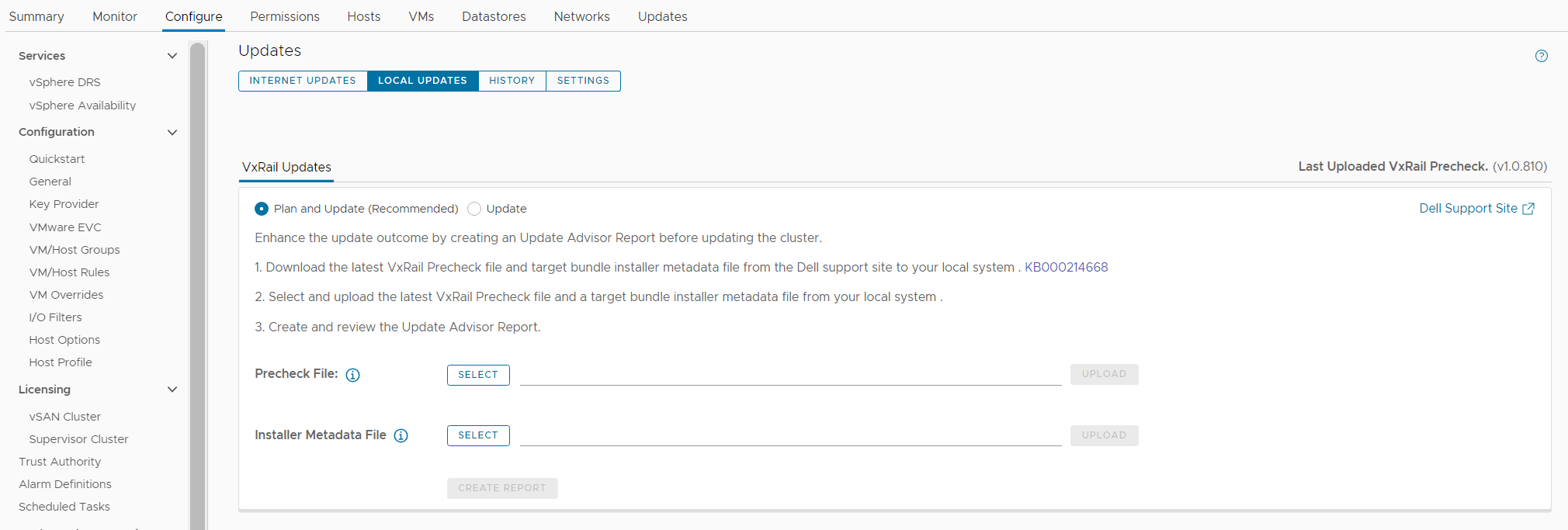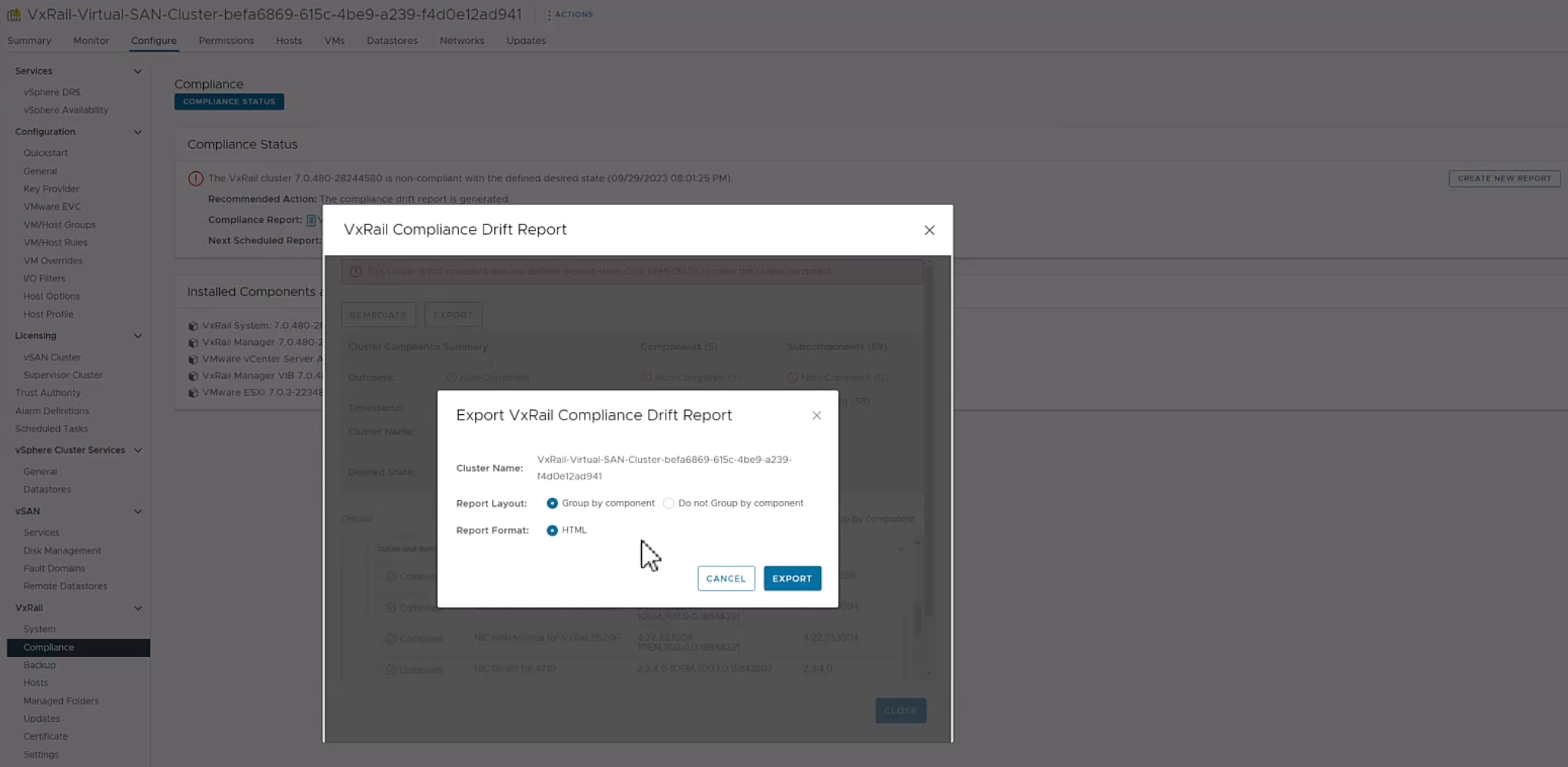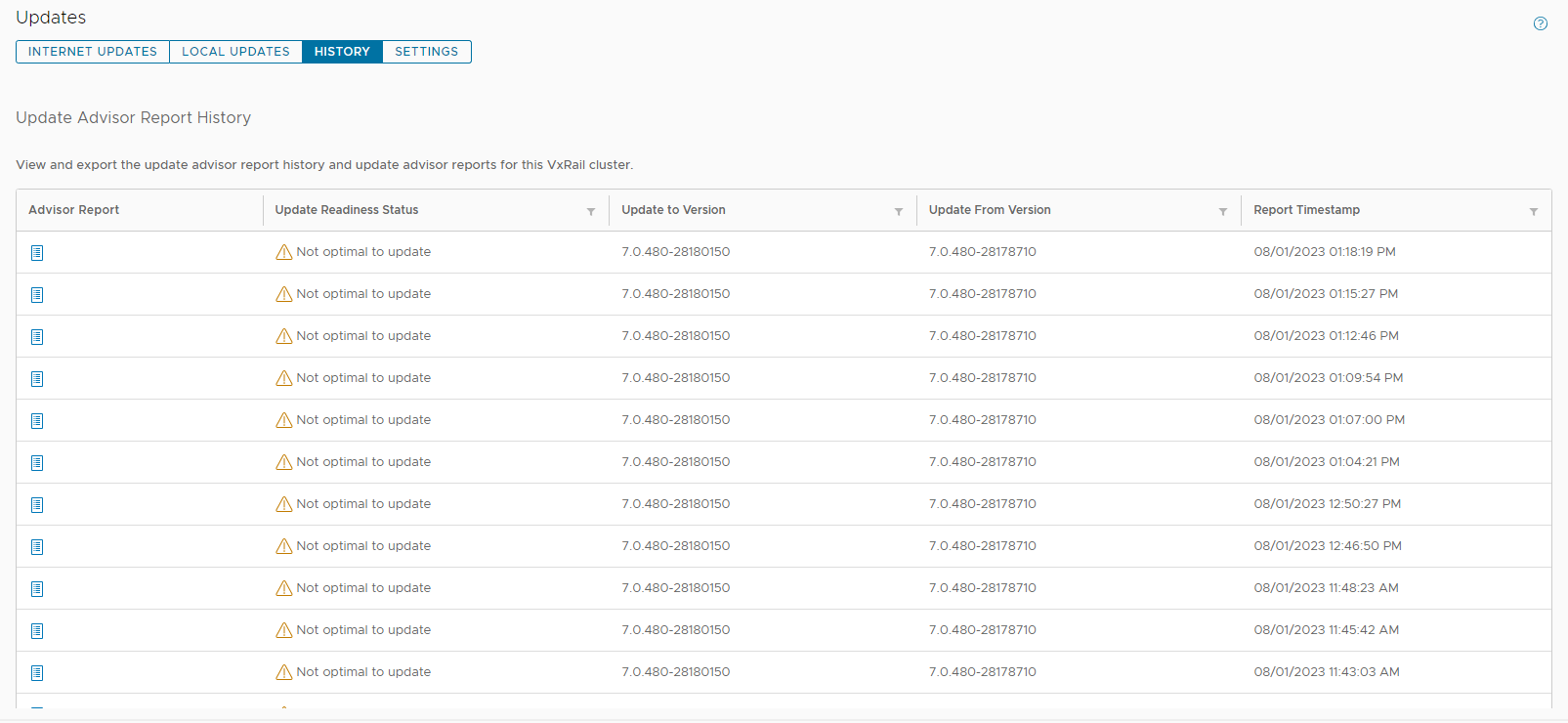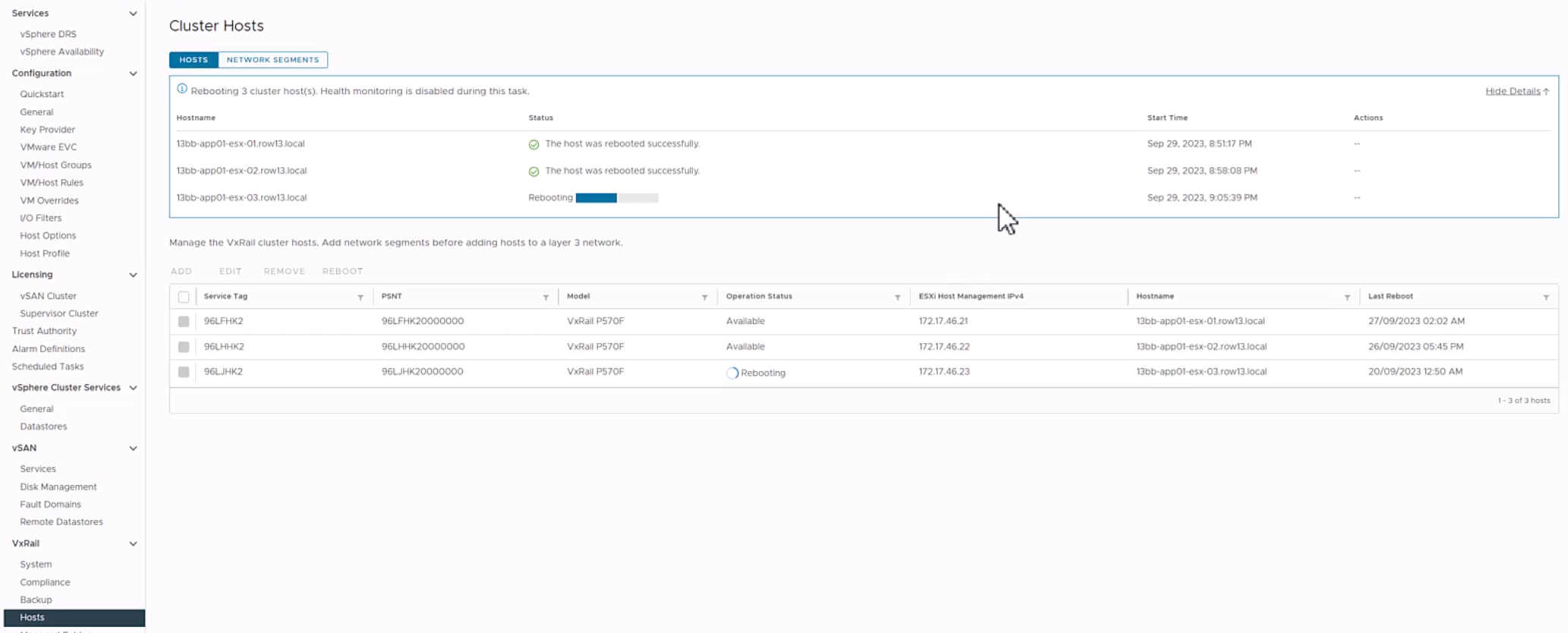

Announcing all-new VxRail Management Pack for vRealize Operations
Mon, 17 Aug 2020 18:31:30 -0000
|Read Time: 0 minutes
Now adding VxRail awareness to your vRealize Operations
January 22, 2020

As the new year rolls in, VxRail team is now slowly warming up to it. Right as we settle back in after holiday festivities, we’re onto another release announcement. This time, it’s an entirely new software tool: VxRail Management Pack for vRealize Operations.
For those not familiar with what vRealize Operations, it’s VMware’s operations management software tool that provides its customers the ability to maintain and tune their virtual application infrastructure with the aid of artificial intelligence and machine learning. It connects to the vCenter Server and collects metrics, events, configurations, and logs about the vSAN clusters and virtual workloads running on them. vRealize Operations also understands the topology and object relationships of the virtual application infrastructure. With all these features, it is capable of driving intelligent remediation, ensuring configuration compliance, monitoring capacity and cost optimization, and maintaining performance optimization. It’s an outcome-based tool designed to self-drive according to user-defined intents powered by its AI/ML engine.
The VxRail Management Pack is an additional free-of-charge software pack that can be installed onto vRealize Operations to provide VxRail cluster awareness. Without this Management Pack, vRealize Operations can still detect vSAN clusters but cannot discern that they are VxRail clusters. The Management Pack consists of an adapter that collects 65 distinct VxRail events, analytics logic specific to VxRail, and three custom dashboards. These VxRail events are translated into VxRail alerts on vRealize Operations so that users have helpful information to understand health issues along with recommended course of resolution. With custom dashboards, users can easily go to VxRail-specific views to troubleshoot issues and make use of existing vRealize Operations capabilities in the context of VxRail clusters.
The VxRail Management Pack is not for every VxRail user because it requires a vRealize Operations Advanced or Enterprise license. For enterprise customers or customers who have already invested in VMware’s vRealize Operations suite, it can be an easy add-on to help manage your VxRail clusters.
To download the VxRail Management Pack, go to VMware Solution Exchange: https://marketplace.vmware.com/vsx/.
Author: Daniel Chiu, Dell EMC VxRail Technical Marketing
Related Blog Posts

Learn More About the Latest Major VxRail Software Release: VxRail 7.0.480
Tue, 24 Oct 2023 15:51:48 -0000
|Read Time: 0 minutes
Happy Autumn, VxRail customers! As the morning air gets chillier and the sun rises later, this blog on our latest software release – VxRail 7.0.480 – paired with your Pumpkin Spice Latte will give you the boost you need to kick start your day. It may not be as tasty as freshly made cider donuts, but this software release has significant additions to the VxRail lifecycle management experience that can surely excite everyone.
VxRail 7.0.480 provides support for VMware ESXi 7.0 Update U3o and VMware vCenter 7.0 Update U3o. All existing platforms that support VxRail 7.0, except ones based on Dell PowerEdge 13th Generation platforms, can upgrade to VxRail 7.0.480. This includes the VxRail systems based on PowerEdge 16th Generation platforms that were released in August.
Read on for a deep dive into the VxRail Lifecycle Management (LCM) features and enhancements in this latest VxRail release. For a more comprehensive rundown of the features and enhancements in VxRail 7.0.480, see the release notes.
Improving update planning activities for unconnected clusters or clusters with limited connectivity
VxRail 7.0.450, released earlier this year, provided significant improvements to update planning activities in a major effort to streamline administrative work and increase cluster update success rates. Enhancements to the cluster pre-update health check and the introduction of the update advisor report were designed to drive even more simplicity to your update planning activities. By having VxRail Manager automatically run the update advisor report, inclusive of the pre-update health check, every 24 hours against the latest information, you will always have an up-to-date report to determine your cluster’s readiness to upgrade to the latest VxRail software version.
If you are not familiar with the LCM capabilities added in VxRail 7.0.450, you can review this blog for more information.
VxRail 7.0.450 offered a seamless path for clusters that are connected to the Dell cloud to take advantage of these new capabilities. Internet-connected clusters can automatically download LCM pre-checks and the installer metadata files, which provide the manifest information about the latest VxRail software version, from the Dell cloud. The ability to periodically scan the Dell cloud for the latest files ensures the update advisor report is always up to date to support your decision-making.
While unconnected clusters could use these features, the user experience in VxRail 7.0.450 made it more cumbersome for users to upload the latest LCM pre-checks and installer metadata files. VxRail 7.0.480 aims to improve the user experience for those who have clusters deployed in dark or remote sites that have limited network connectivity.
Starting in VxRail 7.0.480, users of unconnected clusters will have an easier experience uploading the latest LCM pre-checks file onto VxRail Manager. The VxRail Manager UI has been enhanced, so you no longer have to upload via CLI.
Knowing that some clusters are deployed in areas where network bandwidth is at a premium, the VxRail Manager UI has also been updated so that you only need to upload the installer metadata file to generate the update advisor report. In VxRail 7.0.450, users had to upload the full LCM bundle for the update advisor report. The difference in the payload size of greater than 10GB for a full LCM bundle versus a 50KB installer metadata file is a tremendous improvement for bandwidth-constrained clusters, eliminating a barrier to relying on the update advisor report as a standard cluster management practice. With VxRail 7.0.480, whether you have connected or unconnected clusters, these update planning features are easy to use and will help increase your cluster update success rates.
To accommodate these improvements, the Local Updates tab has been modified to support these new capabilities. There are now two sub-tabs underneath the Local Updates tab:
- The Update sub-tab represents the existing cluster update workflow where you would upload the full LCM bundle to generate the update advisor report and initiate the cluster update operation.
- The Plan and Update sub-tab is the recommended path which incorporates the enhancements in VxRail 7.0.480. Here you can upload the latest LCM pre-checks file and the installer metadata file that you found and downloaded from the Dell Support website. Uploading the LCM pre-checks file is optional to create a new report because there may not always be an updated file to apply. However, you do need to upload an installer metadata file to generate a new report from here. Once uploaded, VxRail Manager will generate an update advisor report against that installer metadata file every 24 hours.

Figure 1. New look to the Local Updates tab
Easier record-keeping for compliance drift and update advisor reports
VxRail 7.0.480 adds new functionality to make the compliance drift reports exportable to outside the VxRail Manager UI while also introducing a history tab to access past update advisor reports.
Some of you use the contents of the compliance drift report to build out a larger infrastructure status report for information sharing across your organizations. Making the report exportable would simplify that report building process. When exporting the report, there is an option to group the information by host if you prefer.
Note that the compliance check functionality has moved from the Compliance tab under the Updates page to a separate page, which you can navigate to by selecting Compliance from under the VxRail section.

Figure 2. Exporting the compliance drift report
The exit of the Compliance tab comes with the introduction of the History tab on the Updates page in VxRail 7.0.480. Because VxRail Manager automatically generates a new update advisor report every 24 hours and you have the option to generate one on-demand, the update advisor report is often overwritten. To avoid the need to constantly export them as a form of record-keeping, the new History tab stores the last 30 update advisor reports. The reports are listed in a table format where you can see which target version the report was run against and when it was run. To view the full report, you can click on the icon on the left-hand column.

Figure 3. New History tab to store the last 30 update advisor reports
Addressing cluster update challenges for larger-sized clusters
For some of you that have larger-sized clusters, cluster updates pose challenges that may prevent you from upgrading more frequently. For example, the length of the maintenance window required to complete a full cluster update may not fit within your normal business operations such that any cluster update activity will impact service availability. As a result, cluster updates are kept to a minimum and nodes inevitably are not rebooted for long periods of time. While the cluster pre-update health check is an effective tool to determine cluster readiness for an upgrade, some issues may be lurking that a node reboot can uncover. That’s why some of you script your own node reboot sequence that acts as a test run for a cluster upgrade. The script reboots each node one at a time to ensure service levels of your workloads are maintained. If any nodes fail to reboot, you can investigate those nodes.
VxRail 7.0.480 introduces the node reboot sequence on VxRail Manager UI so that you do not have to manage your scripts anymore. The new feature includes cluster-level and node-level prechecks to ensure it is safe to perform this activity. If nodes fail to reboot, there is an option for you to retry the reboot or skip it. Making this activity easy may also encourage more customers to do this additional pre-check before upgrading their clusters.


Figure 5. Monitoring the node reboot sequence on the dashboard
VxRail 7.0.480 also provides the capability to split your cluster update into multiple parts. Doing so allows you to separate your cluster upgrade into smaller maintenance windows and work around your business operation needs. Though this capability could reduce the impact of a cluster upgrade to your organization, VMware does recommend that you complete the full upgrade within one week given that there are some Day 2 operations that are disabled while the cluster is partially upgraded. VxRail enables this capability only through VxRail API. When a cluster is in a partially upgraded state, features in the Updates tab are disabled and a banner appears alerting you of the cluster state. Cluster expansion and node removal operations are also unavailable in this scenario.
Conclusion
The new lifecycle management capabilities added to VxRail 7.0.480 are part of the continual evolution of the VxRail LCM experience. They also represent how we value your feedback on how to improve the product and our dedication to making your suggestions come to fruition. The LCM capabilities added to this software release will drive more effective cluster update planning, which will result in higher rates of cluster update success that will drive more efficiencies in your IT operations. Though this blog focuses on the improvements in lifecycle management, please refer to the release notes for VxRail 7.0.480 for a complete list of features and enhancements added to this release. For more information about VxRail in general, visit the Dell Technologies website.
Author: Daniel Chiu

Learn About the Latest Major VxRail Software Release: VxRail 8.0.000
Mon, 09 Jan 2023 14:45:15 -0000
|Read Time: 0 minutes
Happy New Year! I hope you had a wonderful and restful holiday, and you have come back reinvigorated. Because much like the fitness centers in January, this VxRail blog site is going to get busy. We have a few major releases in line to greet you, and there is much to learn.

First in line is the VxRail 8.0.000 software release that provides introductory support for VMware vSphere 8, which has created quite the buzz these past few months. Let’s walk through the highlights of this release.
- For VxRail users who want to be early adopters of vSphere 8, VxRail 8.0.000 provides the first upgrade path for VxRail clusters to transition to VMware’s latest vSphere software train. Only clusters with VxRail nodes based on either the 14th generation or 15th generation PowerEdge servers can upgrade to vSphere 8, because VMware has removed support for a legacy BIOS driver used by 13th generation PowerEdge servers. Importantly, users need to upgrade their vCenter Server to version 8.0 before a cluster upgrade, and vSAN 8.0 clusters require users to upgrade their existing vSphere and vSAN licenses. In VxRail 8.0.000, the VxRail Manager has been enhanced to check platform compatibility and warn users of license issues to prevent compromised situations. Users should always consult the release notes to fully prepare for a major upgrade.
- VxRail 8.0.000 also provides introductory support for vSAN Express Storage Architecture (ESA), which has garnered much attention for its potential while eliciting just as much curiosity because of its newness. To level set, vSAN ESA is an optimized version of vSAN that exploits the full potential of the very latest in hardware, such as multi-core processing, faster and larger capacity memory, and NVMe technology to unlock new capabilities to drive new levels of performance and efficiency. You can get an in-depth look at vSAN ESA in David Glynn’s blog. It is important to note that vSAN ESA is an alternative, optional vSAN architecture. The existing architecture (which is now referred to as Original Storage Architecture (OSA)) is still available in vSAN 8. It’s a choice that users can make on which one to use when deploying clusters.
In order to deploy VxRail clusters with vSAN ESA, you need to order brand-new VxRail nodes specifically configured for vSAN ESA. This new architecture eliminates the use of discrete cache and capacity drives. Nodes will require all NVMe storage drives. Each drive will contribute to cache and capacity. VxRail 8.0.000 offers two choices for platforms: E660N and the P670N. The user will select either the 3.2 TB or 6.4 TB TLC NVMe storage drives to populate each node in their new VxRail cluster with vSAN ESA. To learn about the configuration options, see David Glynn’s blog.
- The support in vSphere 8 in VxRail 8.0.000 also includes support for the increased cache size for VxRail clusters with vSAN 8.0 OSA. The increase from 600 TB to 1.6 TB will provide significant performance gain. VxRail already has cache drives that can take advantage of the larger cache size. It is easier to deploy a new cluster with a larger cache size than for an existing cluster to expand the current cache size. (For existing clusters, nodes need their disk groups rebuilt when the cache is expanded. This can be a lengthy and tedious endeavor.)
Major VMware releases like vSphere 8 often shine a light on the differentiated experience that our VxRail users enjoy. The checklist of considerations only grows when you’re looking to upgrade to a new software train. VxRail users have come to expect that VxRail provides them the necessary guardrails to guide them safely along the upgrade path to reach their destination. The 800,000 hours of test run time performed by our 100+ staff members, who are dedicated to maintaining the VxRail Continuously Validated States, is what gives our customers the confidence to move fearlessly from one software version to the next. And for customers looking to explore the potential of vSAN ESA, the partnership between VxRail and VMware engineering teams adds to why VxRail is the fastest and most effective path for users to maximize the return on their investment in VMware’s latest technologies.
If you’re interested in upgrading to VxRail 8.0.000, please read the release notes.
If you’re looking for more information about vSAN ESA and VxRail’s support for vSAN ESA, check out this blog.
Author: Daniel Chiu


